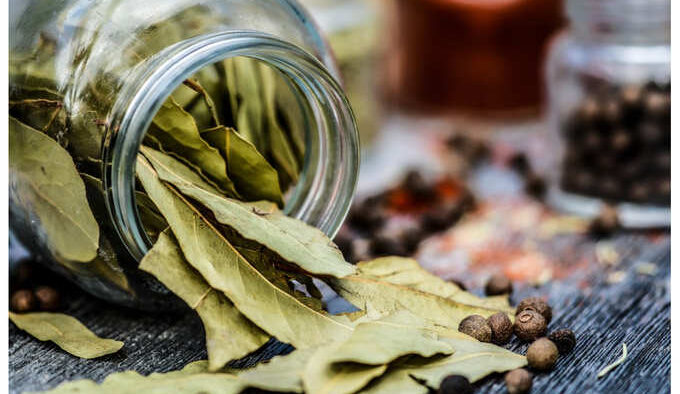Originating in the slopes of the Himalayas and the mountains of Northeastern India is one of India’s oldest spices, Bay leaf. Bay leaf or the Malabar Tej Patta is closely related to another well-known spice, Cinnamon, and is used for a variety of reasons ranging from cuisine to perfumery.
Indian bay leaf finds it mention in Bhavaprakash Nighantu and is considered to be both pungent and sweet in taste. Indian bay leaf fell back when new species of bay leaf started dominating the spice trade. They were rediscovered when many western scholars arrived in India for the first time and studied the plant. Greek traveller, Garcia de Orta identified these leaves using ancient records, during his travel in India. Later, Dr Francis Buchanan-Hamilton, a famous Scottish surgeon cum naturalist came across this exotic leaf.
The Indian bay leaf is an everyday ingredient, especially the dried leaf, in most North Indian kitchens. It has a very sharp bitter or a pungent taste. It has a number of essential oils such as Linalool (the major constituent), alpha-pinene, p-cymene , beta-pinene ad limonene. These contribute to not only its aroma but also to its spicy aroma. It also has traces of cinnamic aldehyde, alkaloids, tannins, eugenol, citric acid, and more. Bay leaf has low amounts of fats and thus has a low calorific value. It is also a great source of Vitamin A, C, and minerals.

Post-harvesting, the leaf is dried for three days before it is used. Traditionally, the leaves are dried in open air for around 10-12 days. Sun drying is not permitted to avoid the loss of colour and essential oils. The essential oils are extracted from the leaves as well as the fruits using steam distillation.
Bay leaves are used in almost every savoury dish in India such fried rice, pulao, biriyani, gravies, soups, stews, and more. It forms one of the main ingredients of the Indian power spice powder Garam Masala. They are used while tempering dishes like subzis and dal, and is usually removed before serving.
In Mediterrenean cuisine, it is used extensively in soups and stews. It forms the base of classic French dishes such as bouillabaisse and bouillon.
Bay leaves contribute to health significantly, apart from adding flavour to food. Traditonally, they were used for the treatment of gastroinstestinal problems like indigestion, flatulence, bloating, and thus was also used as a diuretic. Owing to it analgesic effects, it was used to cure fever. Bay leaves have antidiarrheal, anti-inflammatory, and antidiabetic properties. It helps control blood sugar levels and uric acid levels in the body.
Essential oils also have analgesic, anti-microbial, and anti-inflammatory activities. It is also used to treat arthritis, headache and fungal diseases. It is shown to inhibit the growth of Staphylococcus, Bacillus and other pathogenic bacteria. Fresh, mature leaves are used to treat blood dysentery, inflammation and kidney congestion. It is also observed that cancer is kept at bay with bay leaves.

Due to the large amounts of Vitamin A, it is used to cure night blindness and sore eyes. Extracts of bay leaves along with Allamanda is observed to have better wound healing activity.
In Ayurveda, bay leaf is used for countless reasons. Apart from the abovementioned, it is also used to whiten teeth and treat gum disorders. Sucking on bay leaves can provide relief from stuttering.
One leaf in every dish that is cooked contains a million health benefits. From Indian to Thai to Spanish to the United States, this spice has travelled across the world and is now an essential ingredient in every kitchen.




